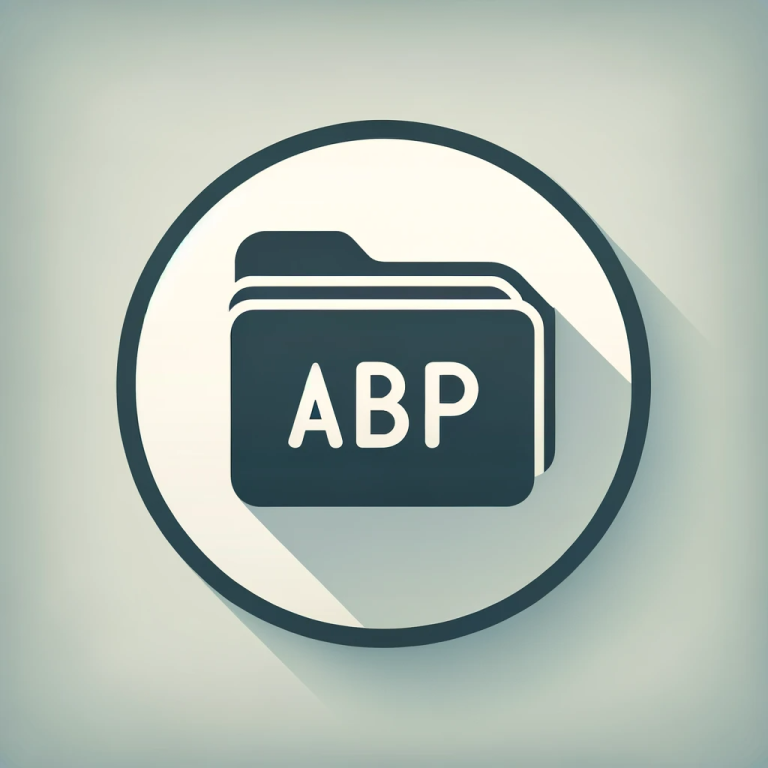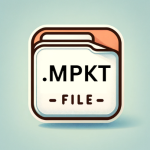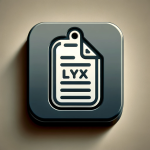.ABP File Extension

AVS Barcode Profile
| Developer | AVS |
| Popularity | |
| Category | Data Files |
| Format | .ABP |
| Cross Platform | Update Soon |
What is an ABP file?
.ABP files are a specific type of file format, often associated with specialized software or applications. The exact nature of these files can vary depending on the context in which they are used.
They may contain data ranging from project information to configuration settings for a particular program.
More Information.
The history and initial purpose of .ABP files are deeply rooted in the software they were created for. Originally, these files were likely designed to provide an efficient means of storing data, settings, or information that could be easily accessed and manipulated within the software environment.
Origin Of This File.
The origin of the .ABP file format is linked to the software or application it is designed for. Typically, such formats are developed by software developers to meet specific needs within their program, offering a unique way to store and manage data relevant to that application.
File Structure Technical Specification.
.ABP files have a unique structure and technical specification that align with their intended use.
This structure could include a header, data section, and possibly a footer, each with specific formats and encoding standards.
The technical specifications are determined by the requirements of the software and the type of data the file is intended to hold.
How to Convert the File?
Converting a .ABP file to another format typically requires specific software or tools. The process can vary based on the operating system you are using.
Below are general guidelines for converting .ABP files on different platforms:
Windows
- Find a Conversion Tool: Look for software that can convert .ABP files to the desired format. This could be a dedicated file conversion tool or a feature within the software associated with the .ABP file.
- Install the Software: Download and install the conversion tool on your Windows PC.
- Open the Tool and Import the .ABP File: Launch the conversion software and use its interface to open or import the .ABP file.
- Select the Output Format: Choose the format you want to convert the .ABP file to. This will depend on what formats the tool supports.
- Convert and Save the File: Initiate the conversion process and save the converted file to your desired location.
Linux
- Research Compatible Tools: Since Linux can have fewer options for specialized file conversion, you may need to look for command-line tools or software available through the package manager.
- Install the Necessary Software: Use the terminal to install the conversion software.
- Run the Conversion Command: Use the terminal to navigate to the folder containing the .ABP file and run the conversion command as specified by the tool’s documentation.
- Save the Output: Ensure the converted file is saved in your desired format and location.
Mac
- Search for Mac-Compatible Conversion Software: Find a conversion tool that is compatible with macOS and supports .ABP files.
- Install the Tool: Download and install the conversion software on your Mac.
- Load the .ABP File: Open the conversion software and load the .ABP file you want to convert.
- Choose Output Format and Convert: Select the target format and start the conversion process.
- Save the Converted File: Save the new file in your chosen location on your Mac.
Android
- Find a Suitable App: Look for an app in the Google Play Store that can convert .ABP files to another format.
- Download and Install the App: Install the chosen app on your Android device.
- Open the App and Load the .ABP File: Launch the app and import the .ABP file.
- Select the Conversion Format: Choose the format you want to convert the file to.
- Convert and Save: Perform the conversion and save or export the file as needed.
iOS
- App Store Search: Find an iOS app capable of converting .ABP files in the App Store.
- Install the App: Download and install the selected app on your iOS device.
- Import and Convert the .ABP File: Open the app, and import the .ABP file, and select the desired output format.
- Execute the Conversion: Convert the file and save the output to your device or a cloud storage service.
Advantages And Disadvantages.
Advantages:
- Specialization: .ABP files are tailored for specific applications, ensuring efficient data handling.
- Compatibility: These files are often designed to work seamlessly within their native environment.
- Optimization: Optimized for the software’s functionality, enhancing performance.
Disadvantages:
- Limited Accessibility: Their specialized nature means they might not be easily accessible outside the intended software.
- Dependency: Often reliant on the software they are associated with, posing challenges if the software becomes outdated or unsupported.
- Format Variation: Different applications may use the .ABP format differently, leading to potential compatibility issues.
How to Open ABP?
Open In Windows
- Identify the Associated Software: First, determine which application the .ABP file is associated with. This could be a specific program like a project management tool, a game, or any specialized software.
- Install the Software: If you haven’t already, install the necessary software on your Windows device.
- Right-click the File: Navigate to the .ABP file, right-click on it, and choose ‘Open with’.
- Select the Application: From the list, select the application that corresponds to the .ABP file. If it’s not listed, use the ‘Choose another app’ option and navigate to the program’s executable file.
- Set Default (Optional): You can also set this program as the default for opening .ABP files by checking the ‘Always use this app’ box.
Open In Linux
- Install the Required Software: Linux users need to install the application associated with the .ABP file, which may involve using a package manager or compiling from source.
- Use Terminal or File Manager: You can either use the terminal to navigate to the file and open it with the appropriate command or use a file manager, right-click the file, and select the appropriate application.
- Consider Wine for Windows Applications: If the .ABP file is for a Windows-specific application, consider using Wine, a compatibility layer that allows running Windows applications on Linux.
Open In MAC
- Find the Relevant Software: Determine which software the .ABP file is designed for and install it on your Mac.
- Double-Click or Right-Click: Double-clicking the file might automatically open it in the associated application. If not, right-click the file and select ‘Open With’ to choose the appropriate software.
Open In Android
- Seek Compatible Apps: Look for an app in the Google Play Store that can open or convert the .ABP file.
- Download and Install the App: After finding a suitable app, download and install it.
- Open the File: Navigate to the file through the app or your file manager, then open it with the newly installed app.
Open In IOS
- Find an iOS App: Search the App Store for an application that can handle or interpret .ABP files.
- Install the App: Once you find a suitable app, install it on your iOS device.
- Access the File: Use the app to open the .ABP file, which may involve importing the file into the app.
Open in Others
For other operating systems or unique devices:
- Research Compatibility: Check if the OS supports the software required for the .ABP file or if there are alternative applications.
- Use Conversion Tools: If direct opening isn’t possible, consider converting the .ABP file to a more widely supported format using online conversion tools or software.









